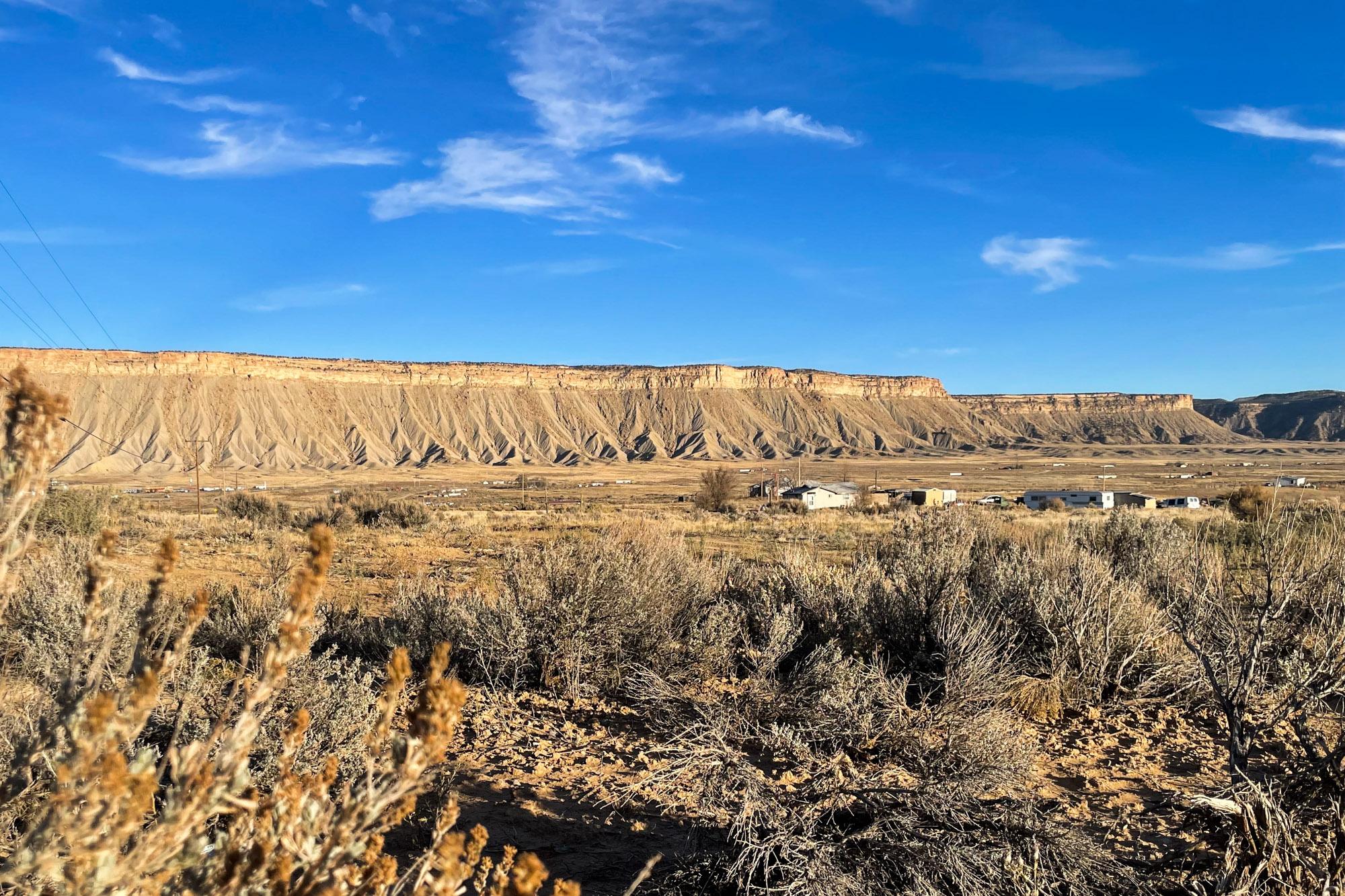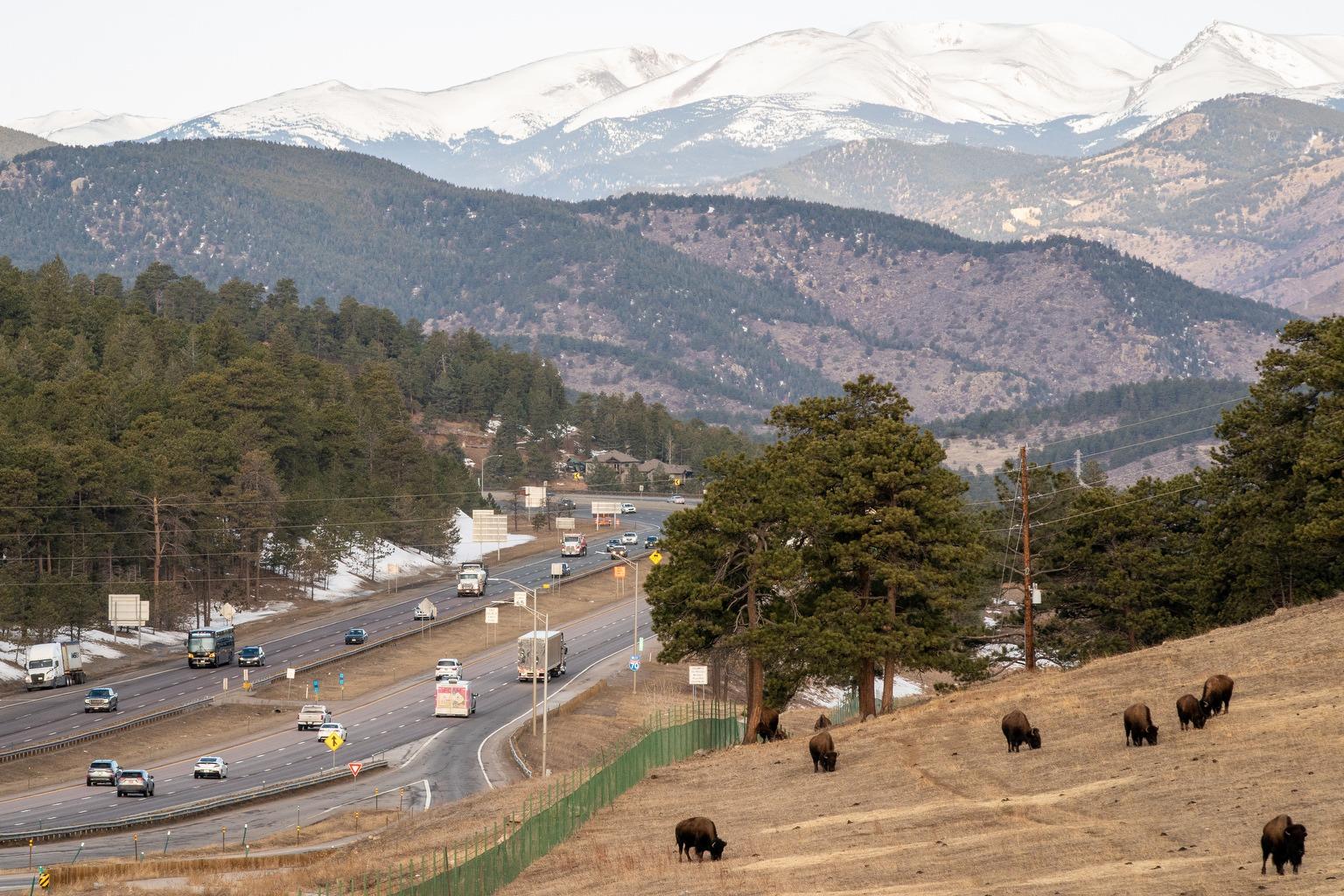
By CHRIS OUTCALT The Colorado Sun
PLEASANT VIEW, Colo. (AP) — With his hands stuffed deep into his pockets, Landan Wilson looks down at the ground and scuffs his boot back and forth against the loose blades of alfalfa hay scattered on the dirt.
It's early March, and Wilson is standing inside a massive storage shed on his family's farm a few miles west of Pleasant View, in an often-forgotten corner of southwestern Colorado. Normally this time of year, this shed, and another just like it, are both full of hay bales the Wilsons will sell to dairy operations in New Mexico and Texas. This year, the sheds are empty.
In 2021, the persistent drought that scientists believe is the driest 22-year stretch in the past 1,200 years hit this part of the state harder than just about anywhere else. Farmers and ranchers with junior water rights along the Dolores River, the region's main source of water, got around 10% or less of what they're used to receiving. What's more, last year's difficult conditions piled onto an equally dry 2020 — and the outlook heading further into spring and summer has many in the local agricultural community deeply concerned.
Everyone from family farmers to people living in town to the farm and ranch operation run by the Ute Mountain Ute tribe rely on the Dolores River.
The waterway originates high in the San Juan Mountains near Lizard Head Pass and cuts 240 miles northwest across Colorado before hitting the Colorado River in eastern Utah. In a normal year, water users in southwest Colorado utilize about 250,000 acre-feet of Dolores River water. Last year, there was only about 110,000 acre-feet of runoff available, 60% of which went to senior water users. (An acre-foot is the amount of water it takes to cover an acre in a foot of water, or about 326,000 gallons.)
Wilson, a fourth-generation farmer, grew up in this part of Colorado. Describing the business, he explains that his father's side of the family was originally from Iowa, but resettled in Montezuma County, down by the Four Corners, in the early 1900s. "I don't know why they did that," Wilson, 27, says in a tone that sounds only half-joking. "Things are more green and lush in Iowa, and more productive."
The Wilsons use their allotment of Dolores water to irrigate about two-thirds of their 1,800 acres, growing mostly alfalfa. Normally, the farm produces enough hay that they're still shipping out a crop to buyers in March. But their last shipment went out about six months ago; there wasn't enough water to grow any more than that. "It's a pretty serious situation," Wilson says.
With less hay to sell, the Wilsons had to think about how they could cut costs. They decided not to use any fertilizer this past growing season because fertilizer is expensive. Other farmers have had to take on more debt or get rid of excess equipment to try to generate some additional cash flow, whatever's needed to get by. "We tried to kind of plan for worst-case scenario," Wilson says. "Then, who knows, you might come smelling like a rose or you might be screwed over."
The result on his farm was the two empty sheds.
All of this has Wilson worried. It's been serious enough that these days he's started to wonder whether he chose the wrong profession. He started in this business by helping his dad on the farm as a kid. He doesn't recall his father talking too much about water shortages back then. In 2017, Wilson decided he enjoyed the work so much that he went all in and started farming with his family full time.
Now, he feels like he only just barely got started, and that as this part of Colorado has been getting drier it's making the work more challenging. He tries to stay optimistic, but that's hard to do when things are rough financially.
"You know, I'm still living with my parents," Wilson says. "That's not something I want to admit. I wanted to do this as a career, but it kind of has me second guessing things."
A dry project
In 1968, Congress authorized the Dolores River Project, a federal Bureau of Reclamation project that stores and delivers water to irrigators and municipalities in the San Juan and Dolores River basins. More than 30 years later, in 2000, the project was considered fully completed, right about the time the most recent long-term drought began to set in.
"They looked at the records when they designed these projects, and the last 20 years are unlike anything in the record," said Ken Curtis, general manager of the Dolores Water Conservancy District, which operates the Dolores Project. The project, which stores water in McPhee Reservoir, the third largest reservoir in the state, serves about 75,000 irrigated acres and around 20,000 people rely on it for drinking water.
There have been some good years during this most recent two-decade stretch, but the yo-yoing from decent to bad or worse and then back again makes things particularly trying. "Some of the studies indicate we may be a little bit more on the leading edge with some of these problems," Curtis said. "But it's hard to predict."
What is tangible is the fallout from last year. The spring was hot and dry and the monsoon season never came. Normally, the water district operates on about $2.6 million in annual fees from customers who pay $40 an acre-foot. Curtis had to make do with almost $1 million less last year.
It's a self-sustaining system when there's water. The district delivers it to farmers and ranchers who pay fees that then go back to support the operation of the district. But without enough water that cycle is disrupted. Not only are farmers paying less in fees because they're receiving less water, Curtis said, some have struggled to pay the bill for what water they did get.
Curtis was forced to cut costs and pull money out of reserves. The district recently let an open position go unfilled and they're waiting to replace some equipment for another few years, hoping things turn around.
At the moment, this year's outlook could go either way. A few March storms dropped some much-needed snow; snowpack in the region is at 93% of average, according to NRCS SNOTEL data. But snowpack isn't everything. "The things that got us," Curtis said, "were the hot dry springs with the dry soil."
The soil conditions in southwestern Colorado are the driest in the state, and the dry soil sponges off valuable spring runoff. Although statewide snowpack was either at or slightly below 100% of average the past two years, runoff was significantly lower than expected. McPhee reservoir contained about 100,000 acre-feet to start 2019; in 2020 it was only about 10,000 acre-feet.
Dealing with another year like last year would be tough for Eric White, who's been farming pretty much his whole life. Like Wilson, he started with his father and has been doing it on his own for the past 18 years. In 2021, out of 770 irrigated acres, he got one cutting of alfalfa from roughly 215 acres and the yield was about half of what it usually is on a first cut.
White worries about the long-term financial impact if the region doesn't get a better water year soon. "Is our land going to be worth what we paid for it?" he asked. He's worried about what he has invested in infrastructure costs, too; a center-pivot sprinkler, for instance, can run up to $140,000.
Curtis, the general manager of the water district, hopes the community can adapt to whatever the conditions are this year and beyond. He thinks back to 2015, which was looking like it might be a dry year until it rained so much in May that the system recovered 50% of its supply in one month. They call it Miracle May.
"They're looking at long-term trends being negative, but it's hard to say how that plays out year to year," Curtis said. "It could be more extremes — ups and downs. Is that death by 1,000 cuts? Or can we adapt?"
Senior and junior
Don Schwindt started growing alfalfa in southwest Colorado in the 1970s. He's made a living that way ever since. "That's my business," he said. "I don't know how to do anything else."
The elevation and climate conditions in this part of the state allow farmers to grow high-quality hay, making it particularly desirable. Schwindt has put his hay on trucks bound for California, Florida and everywhere in between. He's even heard of his crop showing up at a market in Peru because someone wanted it to feed to their prize horses.
Schwindt has had to deal with bad water years in the past — 1977 was one of the worst. Last year, however, didn't impact him the way it did some others. Schwindt holds rights that are senior to the rights held by other users, which puts him closer to the front of the line to draw water. Schwindt's water comes from the Montezuma Valley Irrigation Company, a private mutual ditch company that has those senior rights. That setup has him leaning toward optimism. "It was good," Schwindt said of his 2021. "I expect a good year this year."
Schwindt knows his good fortune has likely made others envious. At the same time, he said, he knows he doesn't operate in a vacuum, and that if you pull out one too many agricultural blocks the entire community's Jenga tower will topple. "We've got to be careful," he said.
He warned of the potential consequences of not being able to grow enough food locally, sending too much of that production overseas. "You look at what's happening in Ukraine today," Schwindt said, "and you think what will happen to us if we've got all our food coming from somewhere else on an ocean because we were too shortsighted to save the beauty of what we've learned to produce in this nation."
Just beyond Schwindt's property, obscured by a hill, lies the Ute Mountain Ute reservation. The water story there is a different one.
Simon Martinez is in charge of running a large farm and ranch operation that's been going for more than 20 years. In 2020, because of the carry-over water from the previous year stashed in McPhee reservoir, the 7,700-acre irrigated operation enjoyed a mostly full supply. Last year, the farm, which has junior water rights, received only about 10% of a full allotment. "We can discuss all day if it's climate change," Martinez said. "It's definitely weather related."
The Ute farm has 110 center-pivot sprinklers, all of which were put to use in 2020. Last year, they only ran about 15. That impacted how much alfalfa they could plant. They had to turn away multiple, long-standing customers and lay off employees because there wasn't enough work.
Hay production was one problem. Corn was another. The tribe couldn't grow enough corn to satisfy the needs of its Bow & Arrow cornmeal operation, which it sells both locally and online. They had to purchase corn from elsewhere in the U.S. to keep up with production — everything is still milled, stored and processed on the reservation. The Bow & Arrow brand corn products include blue, yellow and white cornmeal, as well as corn flour and polenta, all of which is certified non-GMO.
This spring has Martinez worried again. He's trying to plan for how to handle another 10% year — just in case. He's running out of time to decide on what fields he can count on putting into production. If the corn volume falls short again, he said the farm has a good enough reputation with its partners that whatever seed they don't use they can send back and recoup that cost.
All of this translates to jobs.
"How do you keep 30 people employed?" Martinez said. "It was never an issue to pay a bill that was due. Now, we have to be very observant of what we do."
Martinez currently sits on the Dolores Water Conservancy District board and is working closely with Curtis on trying to understand and plan for how much water to expect this year. Curtis doesn't have the answer yet, but he's hopeful it will be better than last year. Looking at the most recent predictions in late March, he said he's hoping 2020 could end up with closer to 50% supply. But he's still waiting on another storm or two.
Surviving in this business, Curtis said, requires a certain amount of optimism, and the team running the Ute farm doggedly clings to hope.
"They've done a good job of building a successful operation," Curtis said. "I just need to find them some water."









